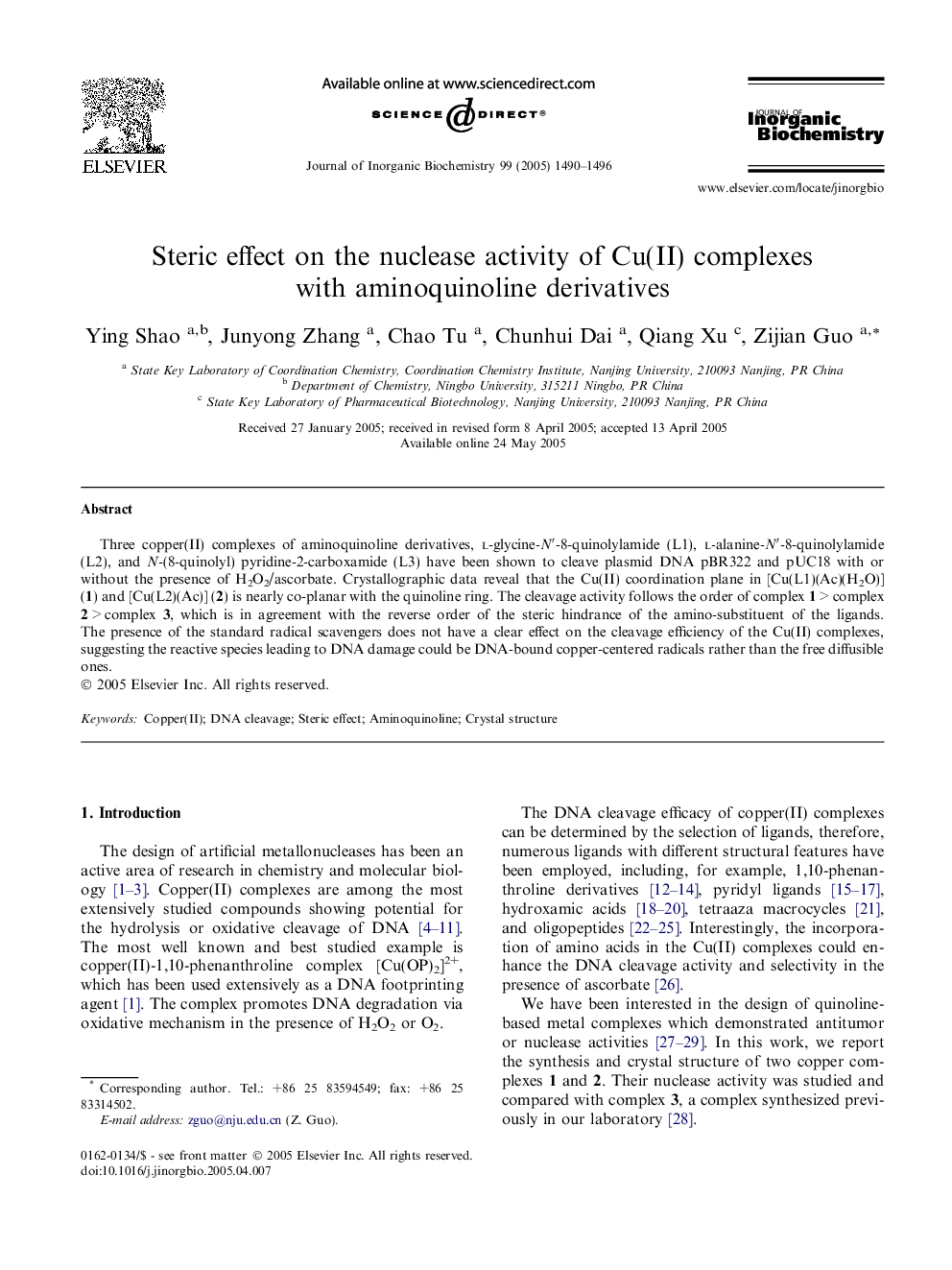| Article ID | Journal | Published Year | Pages | File Type |
|---|---|---|---|---|
| 10574057 | Journal of Inorganic Biochemistry | 2005 | 7 Pages |
Abstract
Three copper(II) complexes of aminoquinoline derivatives, l-glycine-Nâ²-8-quinolylamide (L1), l-alanine-Nâ²-8-quinolylamide (L2), and N-(8-quinolyl) pyridine-2-carboxamide (L3) have been shown to cleave plasmid DNA pBR322 and pUC18 with or without the presence of H2O2/ascorbate. Crystallographic data reveal that the Cu(II) coordination plane in [Cu(L1)(Ac)(H2O)] (1) and [Cu(L2)(Ac)] (2) is nearly co-planar with the quinoline ring. The cleavage activity follows the order of complex 1Â >Â complex 2Â >Â complex 3, which is in agreement with the reverse order of the steric hindrance of the amino-substituent of the ligands. The presence of the standard radical scavengers does not have a clear effect on the cleavage efficiency of the Cu(II) complexes, suggesting the reactive species leading to DNA damage could be DNA-bound copper-centered radicals rather than the free diffusible ones.
Related Topics
Physical Sciences and Engineering
Chemistry
Inorganic Chemistry
Authors
Ying Shao, Junyong Zhang, Chao Tu, Chunhui Dai, Qiang Xu, Zijian Guo,
